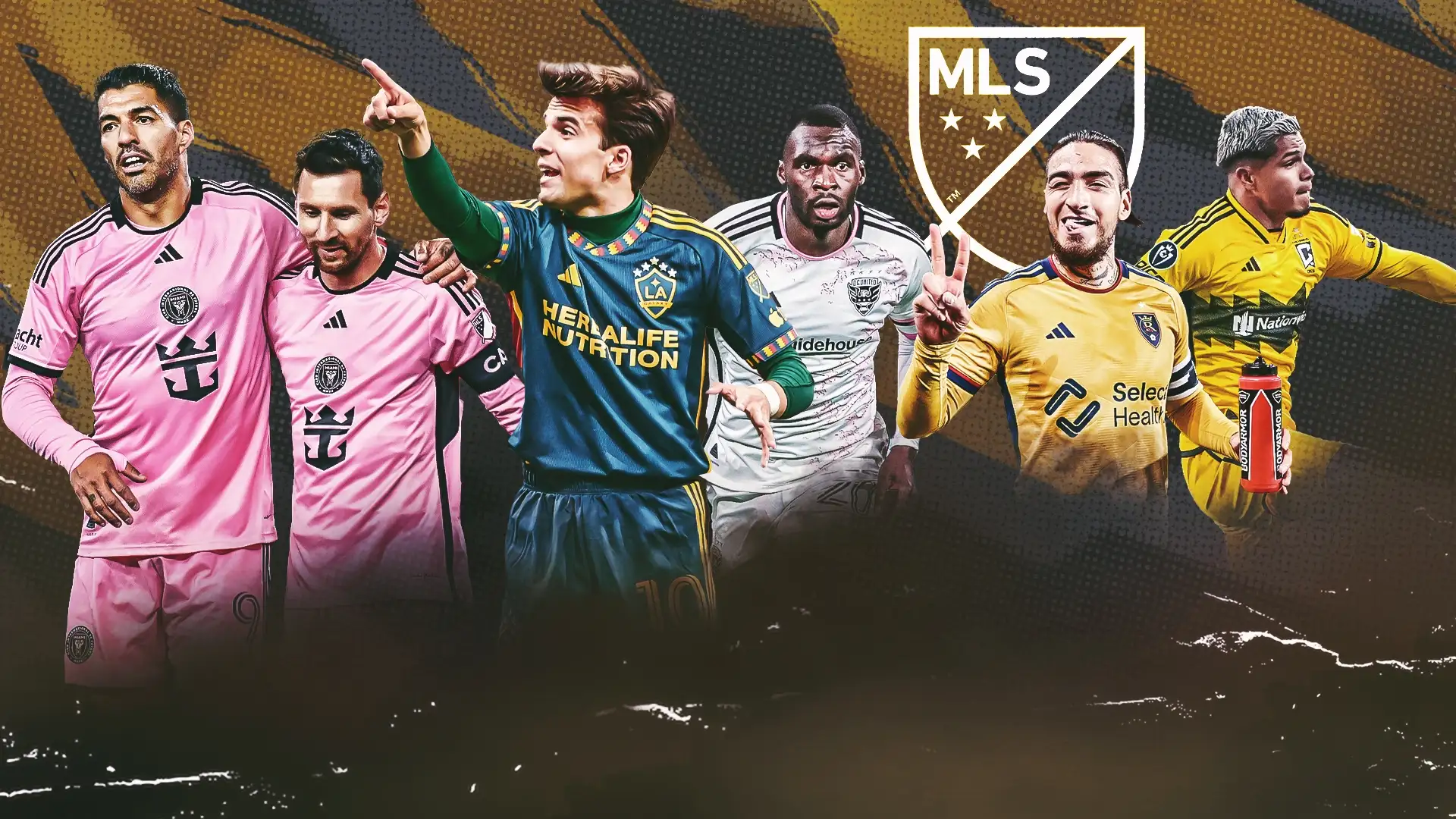The Rise of MLS in America has turned heads across the sports world.
Once considered a minor league struggling for attention, Major League Soccer is now at the center of America’s growing soccer obsession. With massive attendance records, big-name international signings, and a passionate US soccer fanbase, MLS is no longer playing catch-up — it’s building a soccer culture that’s uniquely American.
In this blog, we’ll explore the growth of soccer in the USA, the factors fueling MLS’s expansion, and why the future of soccer in America looks brighter than ever.
How Major League Soccer Expansion Changed Everything
MLS was launched in 1996 with only 10 teams, and cautious optimism.
Fast forward to today, and the league boasts 29 teams with more planned by 2026.
Key Factors Behind MLS Expansion:
- New Markets: Cities like Austin, Nashville, Charlotte, and St. Louis have embraced MLS with sellout crowds and enormous local support.
- Strategic Investments: Billionaire owners and major sponsors see MLS as a serious growth opportunity.
- Stadium Boom: Soccer-specific stadiums like Austin FC’s Q2 Stadium and Nashville SC’s Geodis Park create vibrant atmospheres designed for fans.
Impact:
- MLS has penetrated key regions, turning “non-traditional” soccer cities into soccer powerhouses.
- The league now attracts families, hardcore ultras, and casual fans alike.
Expansion has done more than grow numbers — it has reshaped the American soccer landscape forever.
MLS Attendance Records and Fan Growth
One of the most impressive aspects of the rise of MLS in America is the attendance surge:
- Atlanta United: Leads the league with average attendances of over 47,000 fans per game — higher than many Premier League clubs.
- Charlotte FC: Set an opening game attendance record of over 74,000 fans in 2022.
- League-wide Growth: MLS attendance has consistently increased over the past decade, despite competition from NFL, NBA, and MLB.
Soccer Popularity in the US has never been higher.
MLS stadiums are now buzzing with singing sections, tifos, and traditions that rival European and South American fan culture.
What was once seen as a niche sport is now one of America’s fastest-growing passions — especially among younger generations.
The Messi Effect: Big Signings Changing MLS
When Lionel Messi joined Inter Miami in 2023, the impact on the MLS was immediate and seismic:
- Ticket Sales Skyrocketed: Matches involving Inter Miami sold out within minutes.
- TV Ratings Boosted: Soccer TV ratings in America jumped sharply, with Messi’s debut match drawing millions.
- Sponsorship Influx: Major brands raced to sign sponsorship deals with MLS teams and the league itself.
Other Big Signings Impacting MLS:
- David Beckham: His arrival at LA Galaxy in 2007 set the first benchmark for star power in MLS.
- Zlatan Ibrahimović: Brought global attention and incredible goals to LA Galaxy.
- Thierry Henry: Brought leadership and European pedigree to New York Red Bulls.
Big signings in MLS have done more than just sell jerseys. They’ve elevated the legitimacy of MLS globally, attracting new fans, investors, and young talents eager to play alongside legends.
The Messi effect, combined with smart marketing, has opened a new chapter in the rise of MLS in America.
Youth Development and MLS Academies: Building the Future
Unlike the early days when MLS relied heavily on aging international stars, today’s strategy is different:
Develop homegrown stars.
Key Moves:
- MLS NEXT Program: An elite youth development platform connecting thousands of young players with MLS academies.
- Homegrown Player Rule: Teams can directly sign academy products to senior squads without exposing them to the MLS SuperDraft.
- Investment in Facilities: Clubs like FC Dallas, Philadelphia Union, and LA Galaxy have built world-class youth soccer academies.
Success Stories:
- Brenden Aaronson: From Philadelphia Union’s academy to RB Leipzig and the USMNT.
- Ricardo Pepi: Developed by FC Dallas, now starring in Europe.
- Gianluca Busio: Rising through Sporting Kansas City’s academy, now playing in Italy.
MLS youth academies are not just producing players for the league — they are fueling the future of soccer in America and boosting the USMNT’s international competitiveness.
The Rise of Soccer Culture in the USA
Soccer culture in the USA has exploded — and it’s unlike anywhere else:
- Supporters’ Groups: Organized, loud, and passionate, groups like Atlanta’s “Terminus Legion” and LAFC’s “3252” create electric matchday atmospheres.
- Local Traditions: Each city has unique soccer traditions, chants, and rituals — blending American sports energy with global soccer flair.
- Diverse Fanbase: Soccer attracts a younger, more multicultural demographic compared to traditional American sports.
MLS vs European Leagues:
While MLS may not yet match the prestige of Europe’s top five leagues, the experience of an MLS game — energy, intimacy, authenticity — often surpasses European stadium atmospheres for many American fans.
This organic, grassroots growth of soccer culture is one of the strongest reasons why MLS will continue to rise rapidly.
Investment in MLS and Soccer Infrastructure
One of the driving forces behind the rise of MLS in America is serious financial investment — not just into clubs, but into the entire soccer ecosystem.
Key Areas of Investment:
- Stadiums: Soccer-specific stadiums like Audi Field (DC United) and Banc of California Stadium (LAFC) have created world-class soccer environments.
- Training Facilities: Clubs are investing heavily in state-of-the-art training centers, matching European standards.
- Ownership Groups: High-profile owners, includin’g NFL owners, celebrities like Matthew McConaughey, and tech billionaires, are pouring money into MLS expansion teams.
Impact:
Investment in MLS has accelerated professionalism, improved the quality of the game, and enhanced the fan experience.
The league has transitioned from a survival model to an ambitious growth model — preparing itself for long-term success domestically and internationally.
MLS vs European Leagues: A New Challenge
Can MLS ever compete with Europe’s football giants?
While MLS still trails leagues like the Premier League or La Liga in global prestige, the gap is slowly closing.
Key Strengths of MLS:
- Parity: The salary cap and roster rules create competitive balance — any team can rise to the top.
- Player Freedom: Young American players now view MLS as a launching pad to Europe, and sometimes, they choose to stay.
- Fan Experience: Some MLS stadiums offer a more exciting, fan-friendly matchday atmosphere compared to corporate-heavy European stadiums.
Challenges:
- MLS still needs to improve international TV rights deals.
- The level of depth and tactical sophistication needs to grow to match elite European sides.
However, with the increasing number of international players arriving and local talent flourishing, MLS vs European Leagues is no longer a joke — it’s a serious conversation for the next decade.
The World Cup 2026 Effect on MLS Growth
Hosting the FIFA World Cup 2026 (alongside Canada and Mexico) will be a game-changer for MLS and American soccer overall.
Anticipated Effects:
- Massive Visibility: Soccer TV ratings in America are expected to break all records.
- New Fans: Millions of Americans will experience World Cup soccer firsthand, many for the first time.
- Infrastructure Boost: New stadiums, upgraded transport systems, and public investment will support the growth of MLS cities.
- Player Influx: More international players will see MLS as an attractive post-World Cup destination.
The World Cup 2026 effect will not only supercharge the US soccer fanbase but also elevate MLS’s position in the global soccer conversation permanently.
The timing couldn’t be better for the league’s rise.
Future of Soccer in America: What’s Next for MLS
The future of soccer in America is no longer just hopeful — it’s inevitable.
Major League Soccer is poised to become a global player in the next 10–15 years.
What’s Coming Next:
- Expansion to 30+ Teams: MLS plans to add more clubs, with cities like San Diego and Las Vegas heavily rumored.
- Rising Salaries: MLS will continue to attract bigger talent by increasing salary caps and DP slots (Designated Players).
- Global Recognition: Success at the 2026 World Cup could catapult American soccer’s reputation globally.
- Growing Rivalries: Traditional rivalries like Seattle Sounders vs Portland Timbers and LAFC vs LA Galaxy are intensifying fan loyalty and passion.
MLS isn’t trying to copy Europe — it’s building a uniquely American version of top-flight soccer.
If investment, youth development, and soccer culture growth continue at this pace, MLS will soon be part of every global soccer fan’s conversation.
The Rise of MLS in America is just beginning.
Conclusion: MLS is America’s Soccer Revolution
The Rise of MLS in America has shattered old myths.
Soccer is no longer a “foreign sport” here — it’s a thriving, dynamic, deeply rooted passion that is growing faster than anyone predicted.
Thanks to Major League Soccer expansion, investment in infrastructure, youth academies, and superstar signings like Messi, MLS is not just surviving; it’s thriving.
The future of soccer in America looks brighter than ever.
A powerful, authentic soccer culture is taking hold, and MLS is right at the center of it.
Get ready — because America’s soccer story is just warming up.
Are you already part of the MLS movement? ⚽
Comment below with your favorite MLS team or player!
And if you’re excited about where soccer is heading in the USA, share this blog with fellow soccer fans — let’s grow the passion together!










